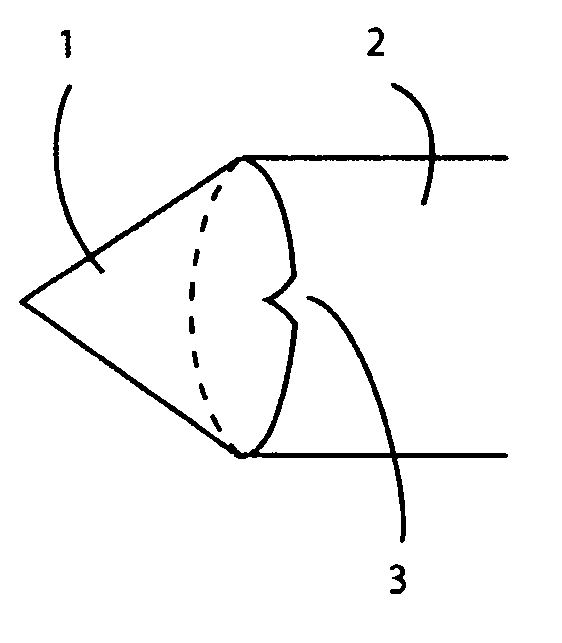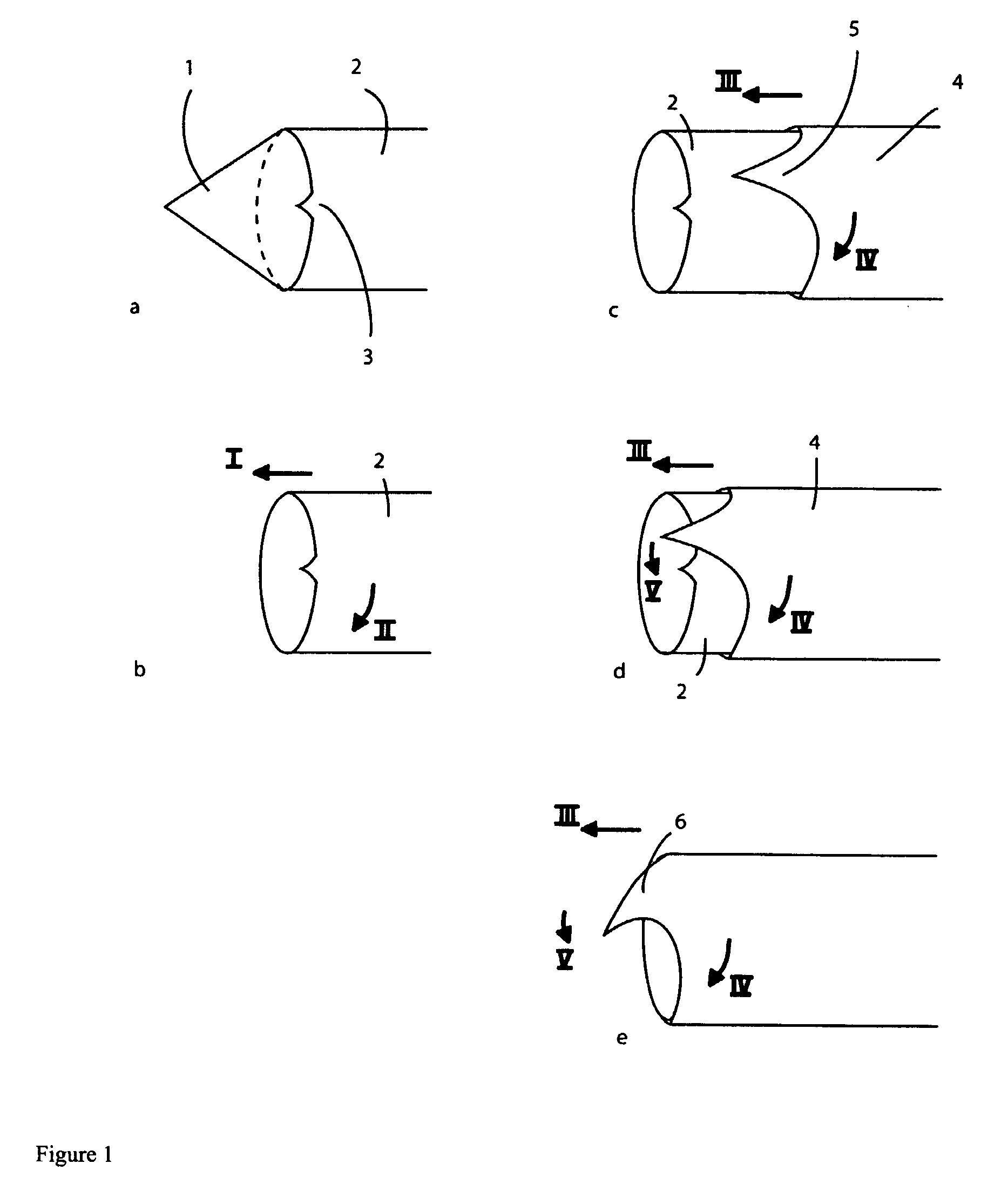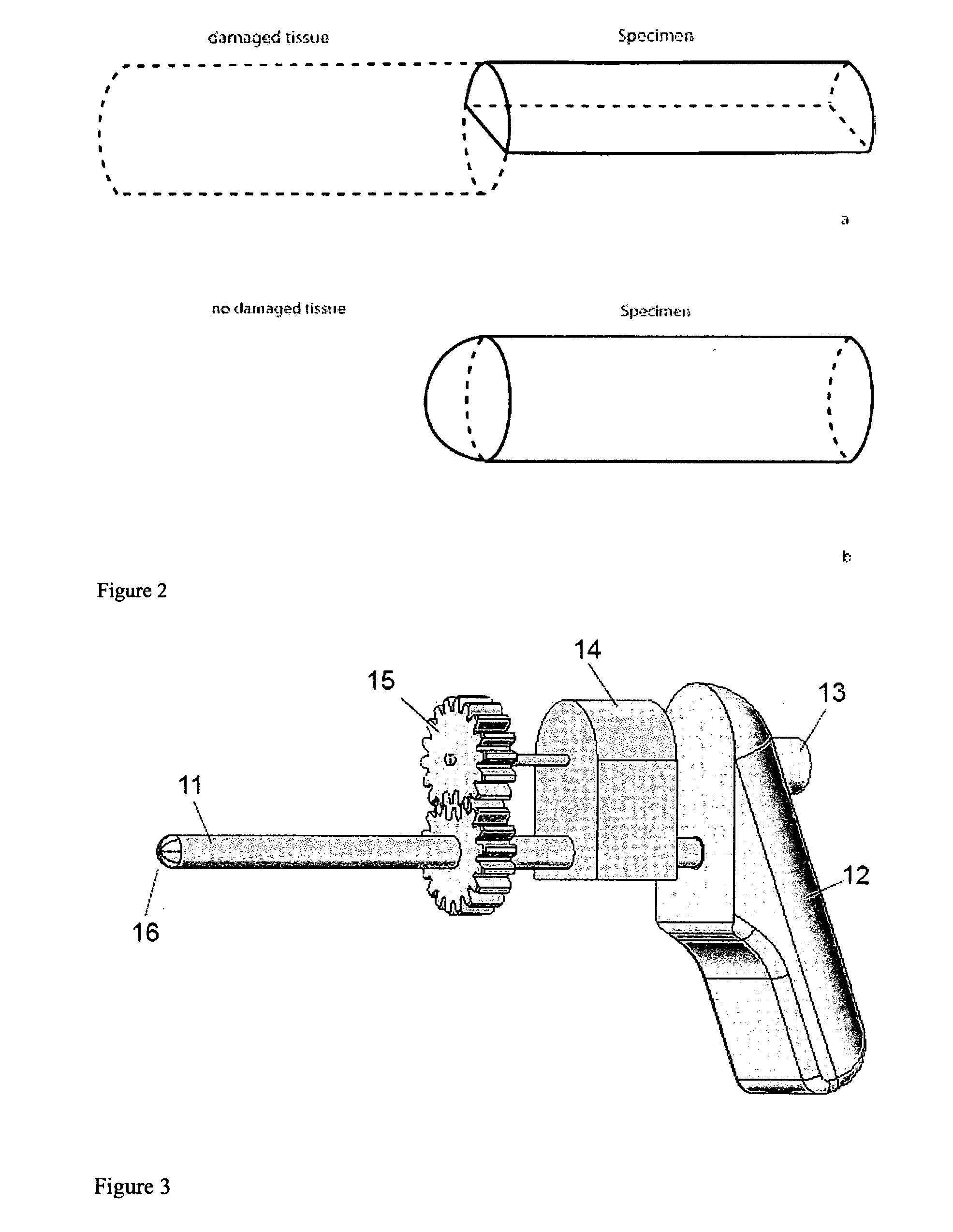Method and device to obtain percutaneous tissue samples
a percutaneous tissue and biopsy method technology, applied in the field of percutaneous biopsy devices, can solve the problems of serious cognitive defects of patients, unstable design, and inability to accurately target the small lesions of the core biopsy devi
- Summary
- Abstract
- Description
- Claims
- Application Information
AI Technical Summary
Benefits of technology
Problems solved by technology
Method used
Image
Examples
Embodiment Construction
[0017] The new cutting mechanism cuts at the tip of a needle a dome like specimen. FIG. 1 illustrates the basic new biopsy concept operating in five time snap shot stages. Only the distally located parts of the instrument are shown; the proximal parts (handle) are not shown.
[0018]FIG. 1a shows the access tube 2 in which an inner stylet 1 with a trocar like tip is positioned. This needle set is percutaneously pushed through the patients tissue until the tip of the stylet 1 is positioned at the location of planned biopsy.
[0019] In FIG. 1b the inner stylet is withdrawn backwards and removed from the access tube 2. The access tube 2 now is rotated (arrow II) and pushed forward (arrow I) in distal direction. During this procedure tissue is cut by the cutting blade of the access tube 2 and a pillar like specimen collects within the access tube 2. The diameter of the specimen equals the inner diameter of the access tube 2, typically 1 mm to 4 mm. This collecting of specimen can be suppor...
PUM
 Login to View More
Login to View More Abstract
Description
Claims
Application Information
 Login to View More
Login to View More - R&D
- Intellectual Property
- Life Sciences
- Materials
- Tech Scout
- Unparalleled Data Quality
- Higher Quality Content
- 60% Fewer Hallucinations
Browse by: Latest US Patents, China's latest patents, Technical Efficacy Thesaurus, Application Domain, Technology Topic, Popular Technical Reports.
© 2025 PatSnap. All rights reserved.Legal|Privacy policy|Modern Slavery Act Transparency Statement|Sitemap|About US| Contact US: help@patsnap.com



